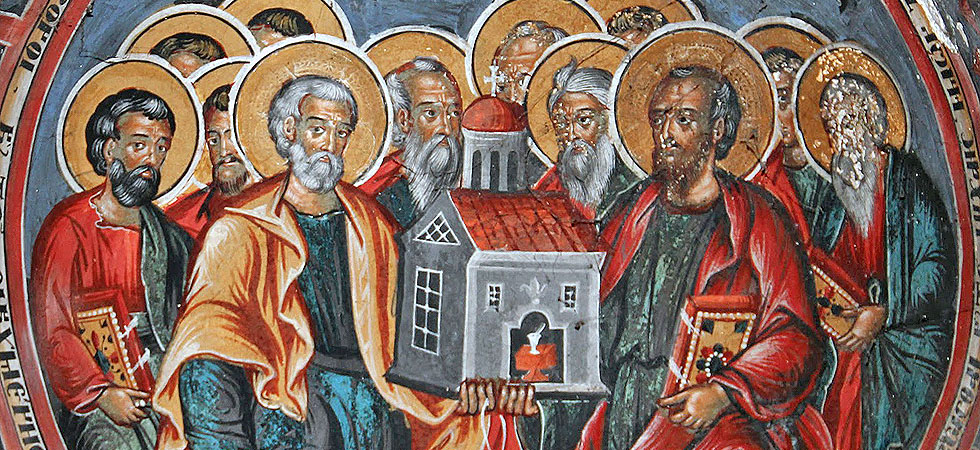
The recent ordination of two priests gave us the opportunity to reflect upon the kinds of vestments used in the liturgy. Like any worn article, it should be noted that liturgical vestments come in all shapes, sizes and styles.
This is true for the chasuble, the outer-most vestment worn by priests. Coming from the Latin meaning “little house,” it is thought that the chasuble was worn in pre-Christian times by ordinary citizens. It was given the name “little house” because it covered nearly every part of the body.
Even though the “little house” may have been a commonly worn garment, there are historical indications that the liturgical ministers would reserve cleaner, newer and finer chasubles for use in worship. As common dress styles changed, fewer people wore the chasuble and it fell strictly into liturgical use, although an argument could be made that a judge’s gown has similar origins.
Still, the style of the early garment developed. As a “little house” that covers the entirety of the body, it can become difficult to lift the arms without elevating and peeling back the garment’s edges. As the Church found herself expanding into diverse territories, climate itself is thought to have had some influence on the style of chasubles.
As more and more ornamentation was added to the exterior of the chasuble, making it heavier and hotter, the sides were gradually shortened with front and back remaining somewhat lengthened. This developed into what are called Roman Chasubles, or sometimes, fiddleback chasubles. Often thought to have been banned at Vatican II in favor of the larger, French-German influenced Gothic chasuble, the transition from one style to another was already in motion even in the 19th century.
In the humidity of the south, some priests have returned to using the Roman style chasuble. They are also beneficial for the more vertically challenged clergy, as one who speaks from personal experience! Most taller priests prefer the Gothic vestments, which can be made of varying lengths. One taller priest once joked to another who was wearing a Roman chasuble, “You can get away with wearing those, but on me, it looks like a bib!”
No matter the style preferences of your parish priest, the “little house” is always to be worn as the outermost liturgical garment. They all — no matter what size or style — symbolize the charity of Christ that the sacred minister is to emulate, wrapping himself in it like stepping into a little house.
St. Paul says in Colossians to, above all things, put on charity. So as the priest dons the chasuble, he may pray: “Lord, who said, ‘My yoke is sweet and my burden light,’ grant that I may so carry it as to merit Your grace.”
In a world that celebrates transitions to new identities, a little house of charity is something into which we all transition at every liturgical gathering.
Clothing might not make the man, but its spiritual significance can sure influence him.

